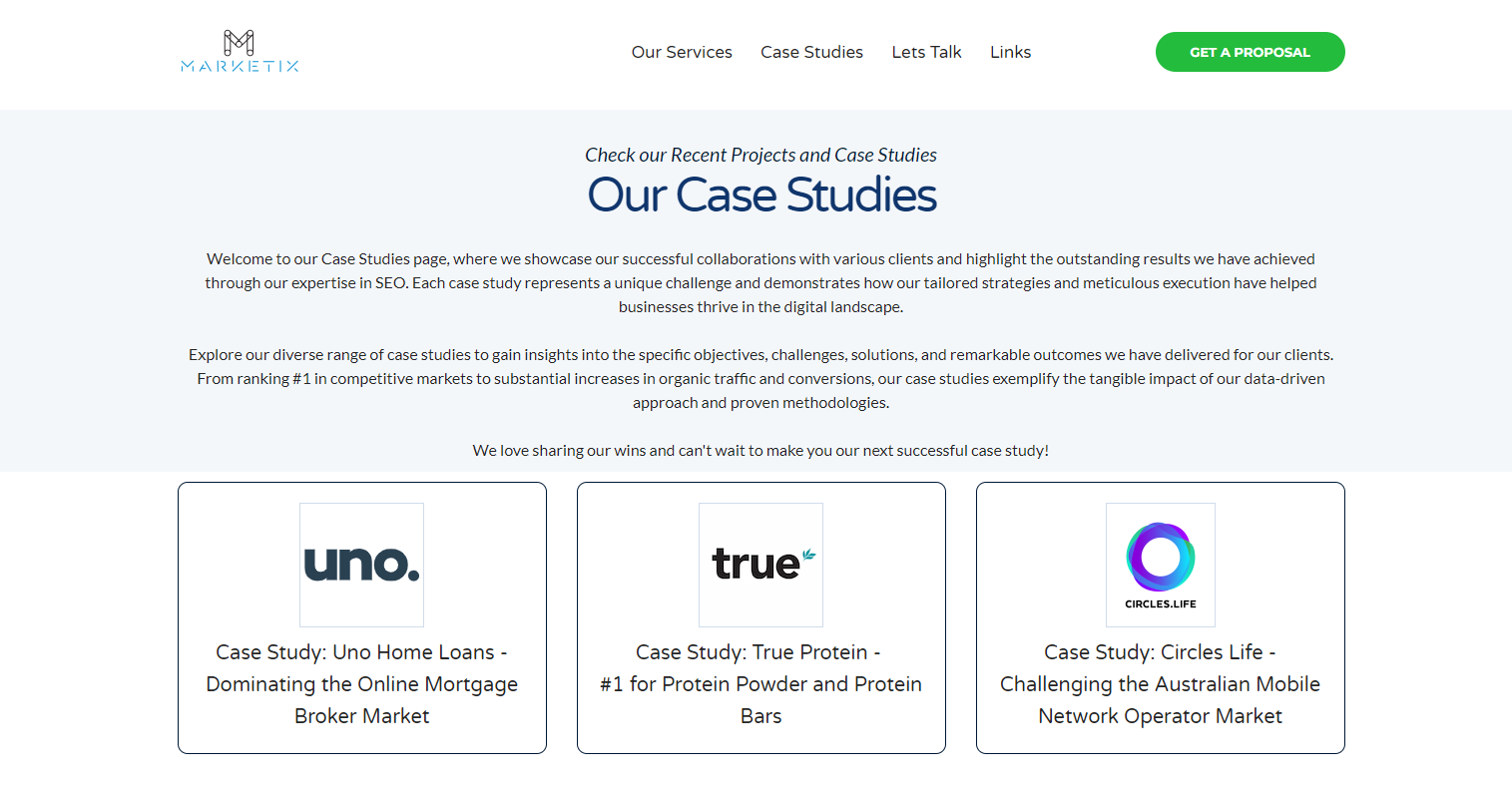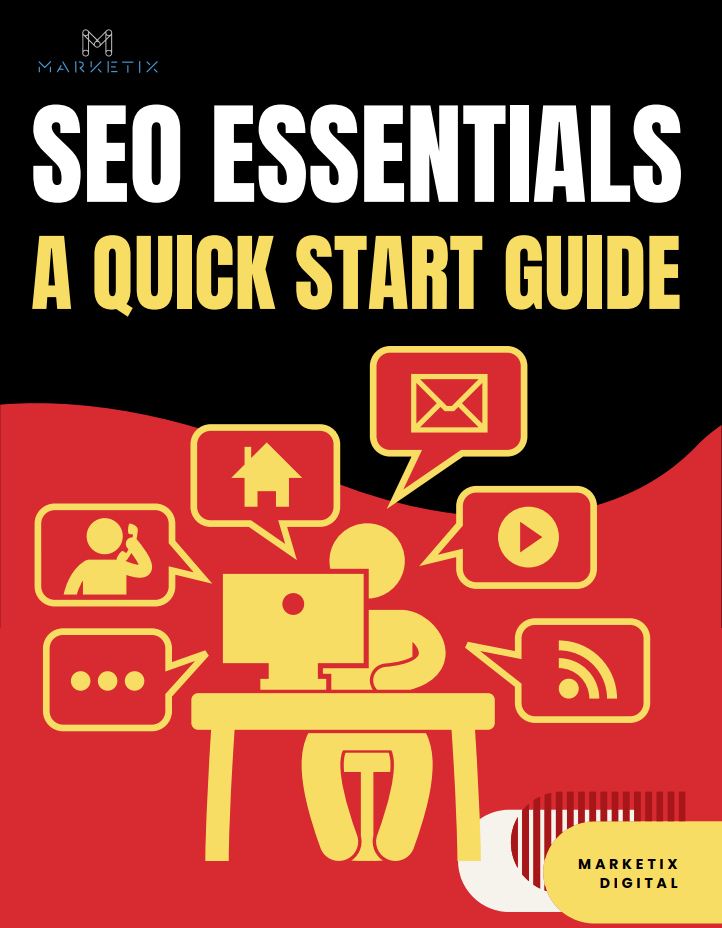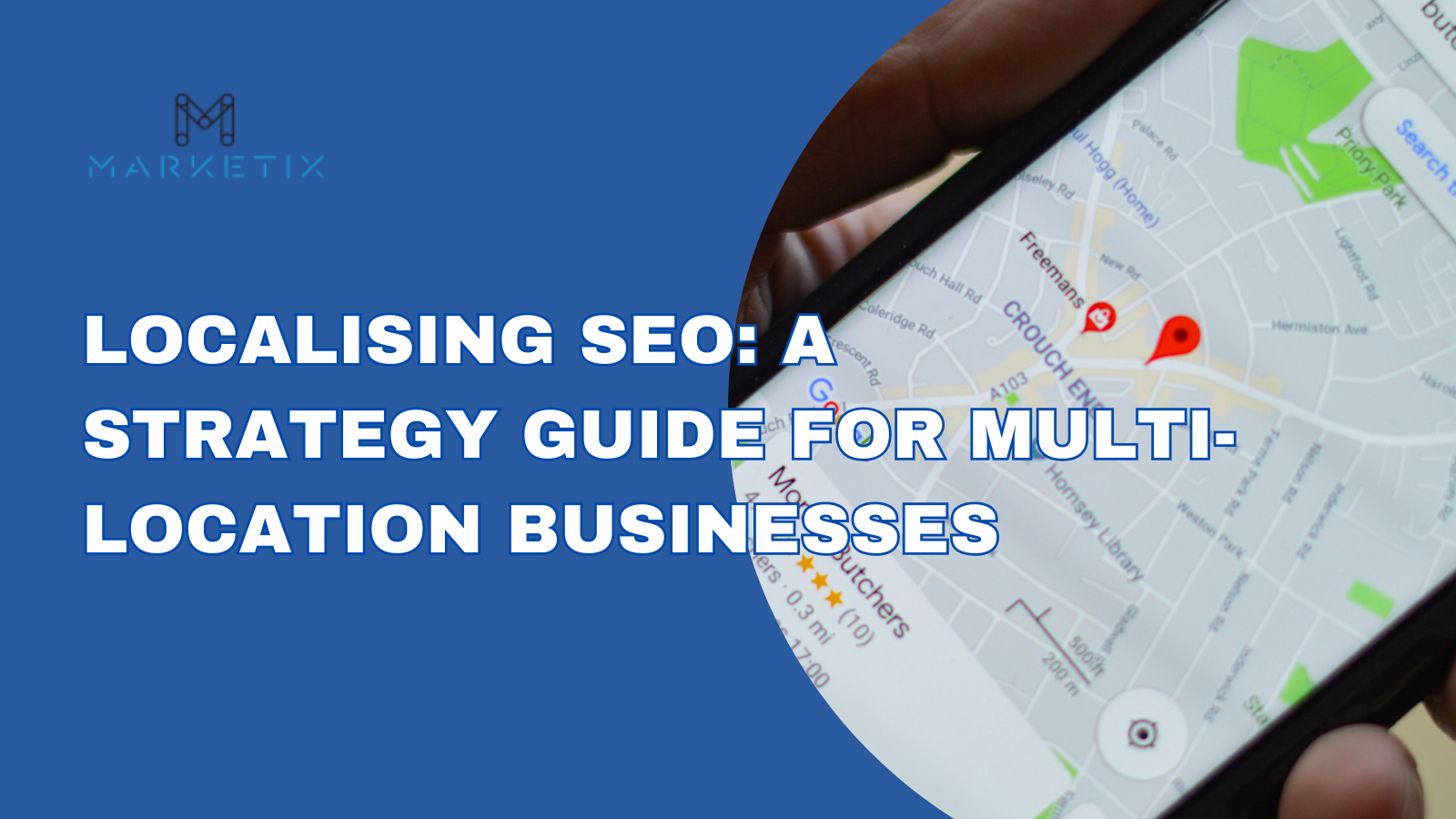- Home
- > The Marketix Blog
- > SEO
How to Build a Business Case for SEO?
Building a business case for SEO is crucial for gaining support from key stakeholders. A well-crafted business case showcases the clear benefits of SEO to your boss, stakeholders, or board of directors.
An SEO business case matters because it outlines the impact on brand awareness, lead generation, revenue growth, and market expansion. Aligning SEO with company goals increases the chances of approval and support.

This guide offers a step-by-step approach to crafting an SEO business case. Follow these steps to make a compelling argument for investing in SEO.
Why Is Getting an SEO Business Case Important?
Unlocking the potential of SEO requires a strategic approach that resonates across every facet of your organisation. An SEO business case serves as the cornerstone, illuminating the critical role SEO plays in your digital strategy.
At its core, an SEO business case outlines the compelling reasons to invest in SEO. It provides a structured rationale that justifies resource allocation and garners support from stakeholders.
SEO is not a quick fix but a sustained effort that yields long-term benefits. A solid business case articulates how SEO aligns with your company’s strategic objectives, emphasising its role in driving sustainable growth.
Often, stakeholders may not fully grasp the breadth of SEO’s impact. Beyond improving search engine rankings, SEO enhances brand visibility, drives targeted traffic, and amplifies customer engagement. These outcomes directly contribute to increased leads and sales.
A well-crafted business case elucidates these connections, demonstrating SEO’s tangible impact on business outcomes.
What Will It Help Achieve?
Crafting a compelling SEO business case serves pivotal purposes for your organisation:
- Securing Buy-In: By presenting compelling data, projections, and case studies, the SEO business case substantiates the value of investment to decision-makers.
- Aligning with Strategic Goals: Integration of SEO initiatives into overarching business strategies supports critical objectives such as revenue growth and market expansion.
- Setting Clear Expectations: Clearly defines anticipated outcomes, timelines, and resource needs, ensuring realistic goals and facilitating measurable success.
- Addressing Concerns: Proactively addresses potential objections regarding cost associated in the SEO campaign, time commitment, or complexity with evidence-based arguments, including ROI assessments and relevant case studies.
- Enhancing Stakeholder Engagement: Involves key stakeholders in shaping the business case, fostering ownership and commitment crucial for effective execution.
Aligning SEO with Your Business Objectives
To effectively align SEO with your organisation's strategic direction, begin by identifying its core goals. Whether it's expanding market share, enhancing customer satisfaction, or driving digital transformation, your SEO strategy should seamlessly complement these overarching objectives.
For instance, if your goal is to boost market share, your SEO approach should concentrate on elevating search visibility and attracting increased organic traffic. This alignment ensures that every SEO initiative contributes directly to achieving broader business goals.
Key SEO Objectives
SEO serves as a powerful tool to achieve various critical business objectives. Here are proven goals that SEO can help you attain:
- Enhancing Brand Awareness: Boost brand visibility significantly by elevating your website's presence in search engine results. Improved rankings for relevant keywords to make sure more potential customers discover your brand, crucial for emerging brands seeking market establishment.
- Driving Lead Generation: SEO focuses on attracting targeted traffic to your website. By optimising content and targeting specific keywords, SEO attracts qualified leads actively seeking your products or services. This not only increases website traffic but also enhances the likelihood of converting visitors into leads.
- Fueling Revenue Growth: SEO directly contributes to revenue growth by driving organic traffic to your website. Increased traffic volumes can translate into higher sales and revenue. Moreover, SEO enhances traffic quality by targeting users with strong purchase intent, helping your site attract visitors poised to make purchases.
- Facilitating Market Expansion: SEO facilitates expansion into new markets by reaching diverse audiences and tapping into new geographic regions. Targeting keywords related to different locales or languages enables your business to attract international clientele, particularly advantageous for e-commerce ventures and businesses aiming to broaden market reach.
How to Create an SEO Business Case Aligned with Company Goals?
Creating an SEO business case that aligns with company goals requires a structured and methodical approach. Here are the key steps to follow.
Step 1. Define the Purpose of Your SEO Business Case
Clearly state why SEO is essential for achieving your company’s goals. Support your case with relevant statistics to ensure it is data-driven. Outline the benefits clearly and concisely, showing how SEO aligns with and supports your business objectives.
For instance, “SEO is critical for our company because it drives organic traffic for one of our competitors “x” who are growing their business substantially through SEO, which accounts for 60% of their total website visitors. Increasing our search engine visibility will lead to higher brand recognition, more qualified leads, and increased sales. We anticipate that this will add $xxx, xxx to our bottom line within 24 months from a well-executed plan”
Step 2. Identify Specific SEO Goals
These goals should align with your company’s overall business objectives. Clearly define the KPIs that will measure success. Remember, each business is unique, so your SEO strategy should be tailored to meet specific goals, whether it’s increasing online sales, enhancing brand visibility, or driving customer engagement.
For instance, an e-commerce business might focus on improving search rankings for product pages, while a SaaS company could aim to increase organic traffic to key service pages. By setting precise, measurable SEO goals, you ensure your strategy directly supports your business objectives.
Step 3. Develop a Detailed Action/Engagement Plan
Create a roadmap tailored to what the business wants to achieve through SEO. This plan should integrate insights from competitive analysis and a comprehensive engagement strategy.
A detailed action plan involves several critical elements. First, outline specific steps to achieve your SEO goals, such as keyword research, content creation, technical SEO improvements, and link-building strategies. This roadmap should be aligned with business objectives, leveraging competitive analysis to identify opportunities and challenges.
An engagement plan breaks down the full implementation process.

For instance, "To achieve our SEO goals, we will develop a detailed roadmap that includes keyword research to identify high-intent keywords, creating a content calendar, and producing high-quality content. We will perform a technical audit to improve site speed, mobile responsiveness, and URL structures. Link-building efforts will involve securing guest posts and backlinks. An allocated budget of $xx,xxx will cover necessary resources, and tools like SEMrush and Google Analytics will monitor progress."
A structured action and engagement plan will make sure that all necessary steps are taken to achieve your SEO goals, aligning with overall business objectives and making data-driven decisions.
Step 4. Create a Timeline
Establish a realistic timeline for implementing each step of your action plan. Set deadlines and milestones to track progress, ensuring alignment with broader business strategies.
A well-defined timeline helps maintain focus and accountability, facilitating smooth execution and timely adjustments.
Monitor progress regularly and adjust the timeline as needed to address any challenges or changes in priorities.
Step 5. Prepare a Persuasive Proposal
Finally, summarise your SEO business case in a clear, concise, and persuasive proposal. Include an executive summary, detailed action plan, timeline, and expected outcomes and ROI. Tailor the proposal to your audience's concerns and interests.
By following these structured steps, you can create a compelling SEO business case that aligns with and supports your company’s goals.
Securing Stakeholder Buy-In
Now that you have built a solid business case for SEO, the next step is to gain buy-in from stakeholders.
This part is very important. Stakeholders need to understand the value SEO brings and why it's worth the investment.
First, present clear, data-driven evidence. Use case studies, projections, and real-life examples to show how SEO can drive business growth.

Highlight the potential ROI and how it aligns with the company’s strategic goals.
The more concrete your data, the more convincing your argument will be.
Next, address any concerns or objections. Be prepared to answer questions about cost, time commitment, and complexity. Use solid data and real-world examples to counter these concerns. Demonstrating a clear plan with measurable outcomes will help ease any doubts stakeholders may have.
Finally, involve key stakeholders in the process. Engage them in discussions and seek their input. This fosters a sense of ownership and commitment to the SEO strategy. When stakeholders feel involved, they are more likely to support and champion the initiative.
Final Thoughts & Recommendation
Crafting a solid business case for SEO is not just about outlining its benefits but strategically aligning it with your company’s core objectives.
Remember, focus on clear, data-driven insights and demonstrate how SEO contributes to brand visibility, lead generation, and revenue growth. Address potential concerns upfront, such as costs and time commitments, with evidence-backed arguments and realistic ROI projections. That way, you can effectively secure buy-in from stakeholders.
Engaging stakeholders throughout the process fosters ownership and commitment, paving the way for seamless execution of your SEO strategy.
A structured approach and maintaining a professional tone, you can create a compelling business case that drives sustainable business growth through strategic SEO investments.
For more guides like this and to stay updated with the latest insights, connect with us at Marketix Digital, the leading SEO agency in Sydney. We regularly provide expert advice and strategies to help businesses thrive in the digital landscape.
Recent Posts

Free Download SEO Book
Download our 24-page SEO book to learn:
- How SEO Really Works
- How to Rank #1
- Content & SEO
- Choosing an SEO Agency
Thank you!
You have successfully joined our subscriber list.
Recent Posts






